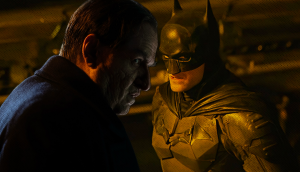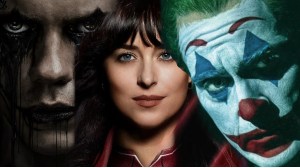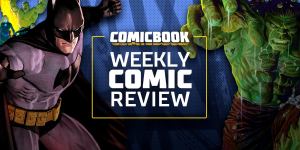The internet has entirely changed the ways in which fans learn about their favorite movies and TV shows, as the cast and crew of such projects often take to social media to share unique insight into the process of bringing a story to life that weren’t as widely spread decades ago. Part of this process also means that concept art for projects make their way online, oftentimes shared by the artists responsible for the pieces themselves, igniting pangs of remorse in some audiences about these sequences never making it into the final product. Despite how ambitious these pieces of art might be or the compelling story beats they depict, some fans have conflated the existence of these images to mean that concept art contains scrapped scenes that nearly made it into the movie, resulting in passionate demands for these sequences to be revived. In actuality, concept art rarely conveys ideas that even make it into a project’s script, let alone an idea that was filmed in any capacity.
Videos by ComicBook.com
As the term implies, concept art is merely crafted to help visualize characters, locations, and environments a film could explore, or even potential narrative reveals. While storyboards or pre-visualization animatics are developed further along into the filmmaking process and involve direct input from a director, depending on the nature of a project, concept art could be crafted based purely on loose outlines of potential plot points that a film or TV show might explore.
Sadly, the detachment between fandom and the realities of the filmmaking process causes confusion among audiences, with the Star Wars community being one of the groups that have bemoaned the omission of sequences seen in concept art not making their way into a finished product. Dating back to the origins of the franchise, filmmaker George Lucas famously tapped artist Ralph McQuarrie to develop images that would help convey his ambitions to studio executives more effectively than words could. Given the nature of this collaborative process, those images are almost identical to scenes witnessed in the finished films, with the designs of the characters being the biggest deviations from McQuarrie’s concept art to the final product.
Following Disney’s purchase of Lucasfilm and the development of a sequel trilogy of films, the studio tapped a number of different artists to help conjure up images that would reflect potential story elements that could be depicted in the films. While this resulted in countless captivating images, the drawback is that some fans have been left confused about the development of Star Wars: The Rise of Skywalker, with some fans believing the final product deviated to strongly from its original plan that they have been demanding to see a “J.J. Abrams Cut” of the film. In the wake of the film’s release, members of the filmmaking team have shared pieces of concept art depicting things like Rey encountering Tusken Raiders at Luke Skywalker’s former home and even more grisly depictions of the hero embracing her darker nature. These images, among many others, have made critics of the film passionate about seeing the release of its deleted scenes, which are absent on its home video release, regardless of whether any of the scenes from concept art ever becoming even close to a reality.
Additionally, former Episode IX director Colin Trevorrow confirmed that leaked concept art conveyed some of the story beats he would have explored in his film, resulting in confusion from fans about how far into the development process he was before parting ways with the studio. The issue here is that, with those specific images aligning with his plans, viewers began to assume any concept art was something a filmmaker intended to shoot, as opposed to merely being a possible avenue they could have explored if they so desired.
Similarly, filmmaker Zack Snyder famously parted ways with Justice League before principal photography had been completed, having spent the last few years teasing his fans with pieces of concept art depicting moments he intended to shoot, adding even more gravitas to those concepts and further blurring the distinction between storytelling potential and storytelling intentions. Having shared not only concept art but also storyboards and outtakes from scenes he actually filmed, fans have been attempting to determine whether images he has shared were notions he toyed with or if they were scenes deleted from the film, with every teases he releases calling into question how close we came to seeing such sequences in the finished film.
Lucasfilm’s Phil Szostak, author of various The Art of Star Wars books, shared an informative thread about the nature of concept art on Twitter back in 2018 that sheds light on the issue. In short, Szostak clarifies, “Concept artists are given a lot more latitude to pitch their own ideas than most folks seem to realize,” while also pointing out, “The most ‘blue-sky’ period of concept art creation, when production designers encourage the artists to pitch ideas, tends to be early, while the script is still being written. For every one of those ideas that makes it into the film, there are dozens that don’t.”
For many fans, these details don’t need to be cleared up, as “concept art” makes it clear that these images are nothing more than a concept considered by someone at some point and they don’t reflect anything more “official” than what appears in a film. Unfortunately, the fans who decry a finished film for not embracing concept art that makes its way online need to accept that a majority of concept art is about as “official” as any image crafted by any fan, no matter how talented or well-connected to a studio, and embrace those images as being as close to a reality as any storytelling possibility we come up with in our own heads.





